 
|
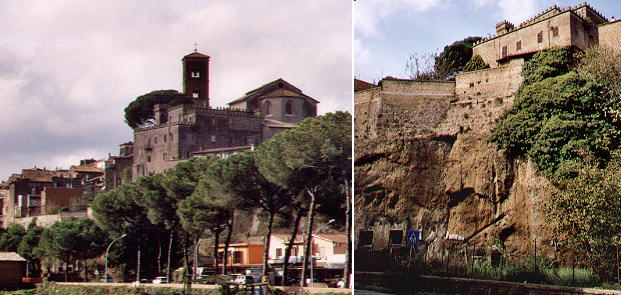 | ||
Sutri was founded by the Etruscans on a tufaceous hill at the confluence of two streams. It was conquered by the Romans in 389 B.C.and it flourished under their rule because of its position on the Via Cassia. Part of Sutri is on higher ground (acropoli) and notwithstanding the fact that it is now occupied by the Cathedral and by Palazzo Vescovile (bishop's palace) it still conveys the image of a fortress.
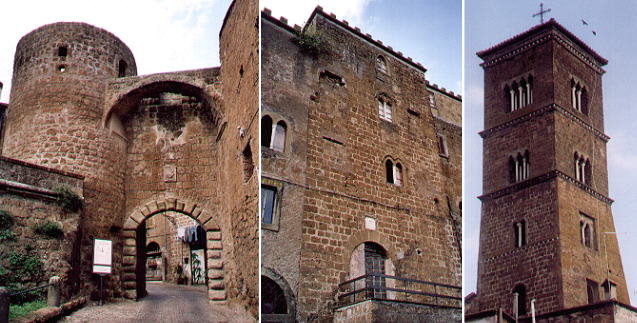 | ||
The main medieval buildings of Sutri retain something of the Etruscan and Roman times and this applies to the whole town.
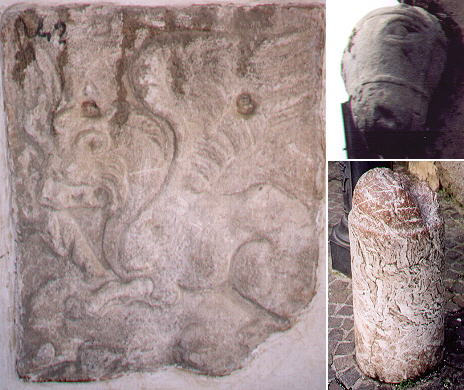 | ||
Reliefs, fragments of statues and of columns can be found in many places. The large Etruscan relief shown in the image above is walled in the courtyard of Palazzo Comunale: it shows a sphinx (the Etruscans had a fancy for fantastic monsters). In the XIIIth century Viterbo hosted the Papal court for long periods and the medieval fountain shown in the background of this page has the typical shape of the Viterbo fountains.
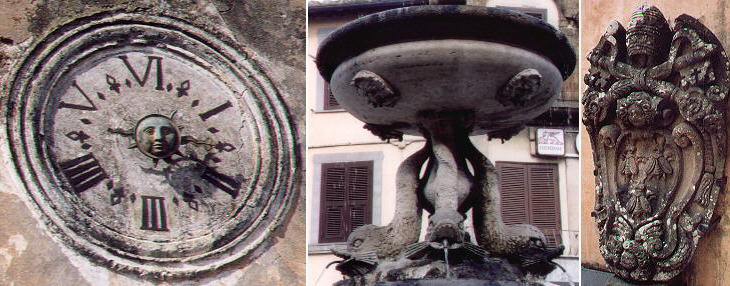 | ||
Sutri has also some interesting memories of the Baroque period. The XVIIth century clock shown in the picture is one of the very few which is still geared to indicate the Italian hour (another one is in the courtyard of Palazzo del Commendatore in Spedale di S. Spirito in Rome). The clock shows 6 rather than 12 hours and it has just one pointer (in this clock a ray of the sun). The pointer reached 6 at sunset and this in every period of the year, because the clock was reset every two weeks to take care of the changes in the duration of daylight, so the Italian hour was indicating what was left of the day before sunset. When J. W. Goethe visited Italy in 1786 the Italian hour was still used in all parts of the country; Goethe gave a very detailed explanation of how it worked in his Italienische Reisen. The French occupation of Italy at the end of XVIIIth century introduced the European hour, but in 1815 the State of the Church returned to the Italian hour and Stendhal explained the Italian hour in his 1827 Promenade dans Rome. S. Pietro, S. Agnese in Agone, and Trinità dei Monti had two clocks which showed both the Italian and the European hour (which was called Ultramontana - beyond the mountains, with reference to the Alps).
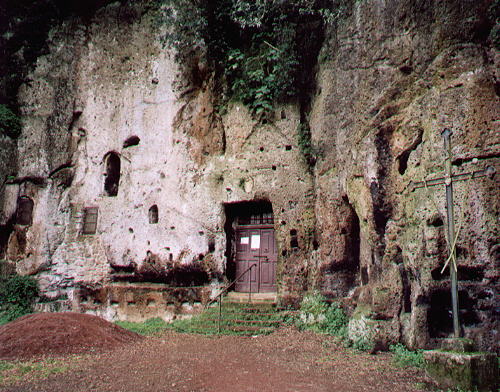 | ||
Tufa can be easily cut and since the most ancient periods the inhabitants of the area exploited this property of tufa to create artificial caves, tombs, cellars, stables. In a wood immediately outside Sutri there is a church (Madonna del Parto) cut inside the rock. Experts have come to the conclusion that the site was initially an Etruscan tomb, which in the IIIrd century A.D. was modified by the followers of the god Mithras, a Persian god identified with sun and widely worshipped in Rome. The cult was celebrated in underground sites rather than in temples. In the IVth century the Christian faith gradually became the official religion of the Roman Empire and the mithraeum was turned into a church (S. Clemente and S. Prisca in Rome are both churches built on the site of a mithraeum).
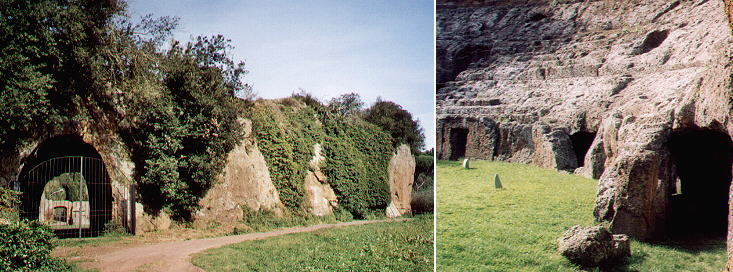 | ||
Sutri has an even more impressive example of exploitation of the properties of tufa. The Romans identified an isolated circular hillock not far from Sutri and they cut it to obtain an amphitheatre for the town. The amphitheatre had internal corridors and stairs to allow easy access to the gradines (stepped seating). There is no sign of brickwork; all the facilities were obtained by cutting the rock.
Monterosi
This part of Latium is characterized by a certain number of lakes of volcanic origin. The smallest ones have been drained at different stages with the exception of the circular pond near the little town of Monterosi.
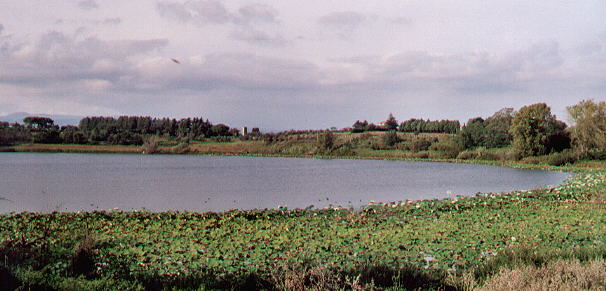 | ||
In the past Monterosi was just a handful of houses along Via Cassia; notwithstanding its limited size Monterosi has a fine palace built in 1690 by Giovanni Battista Contini for the Altieri family (the palace is currently known as Palazzo Del Drago and it is under restoration), a main church with a rich Baroque decoration (with the star of the Altieri) and a little church (S. Giuseppe) with Renaissance and Baroque elements.
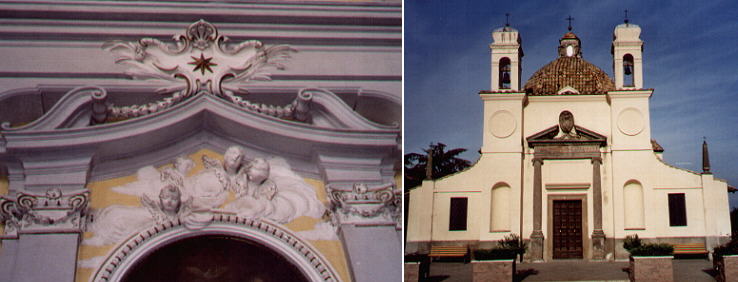 | ||
From Civitavecchia to Civita Castellana - other pages:
Civitavecchia, Allumiere and Tolfa
Oriolo Romano and Caprarola
Nepi and Castel Sant'Elia
Civita Castellana
some other walks:
Walks with Ferdinand Gregorovius in the Roman countryside
In and about Viterbo
A walk to Porta Furba
Via Appia Antica from Cecilia Metella to Torre in Selci
Via Appia Antica from Torre in Selci to Frattocchie
See my Home Page on Baroque Rome or my Home Page on Rome in the footsteps of an XVIIIth century traveller
All images © 1999 - 2003 by Roberto Piperno. Write to romapip@quipo.it
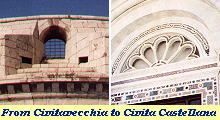 Sutri and Monterosi
Sutri and Monterosi